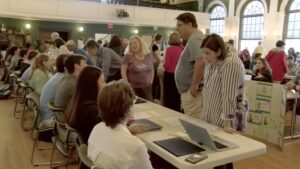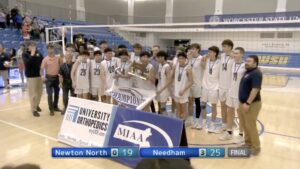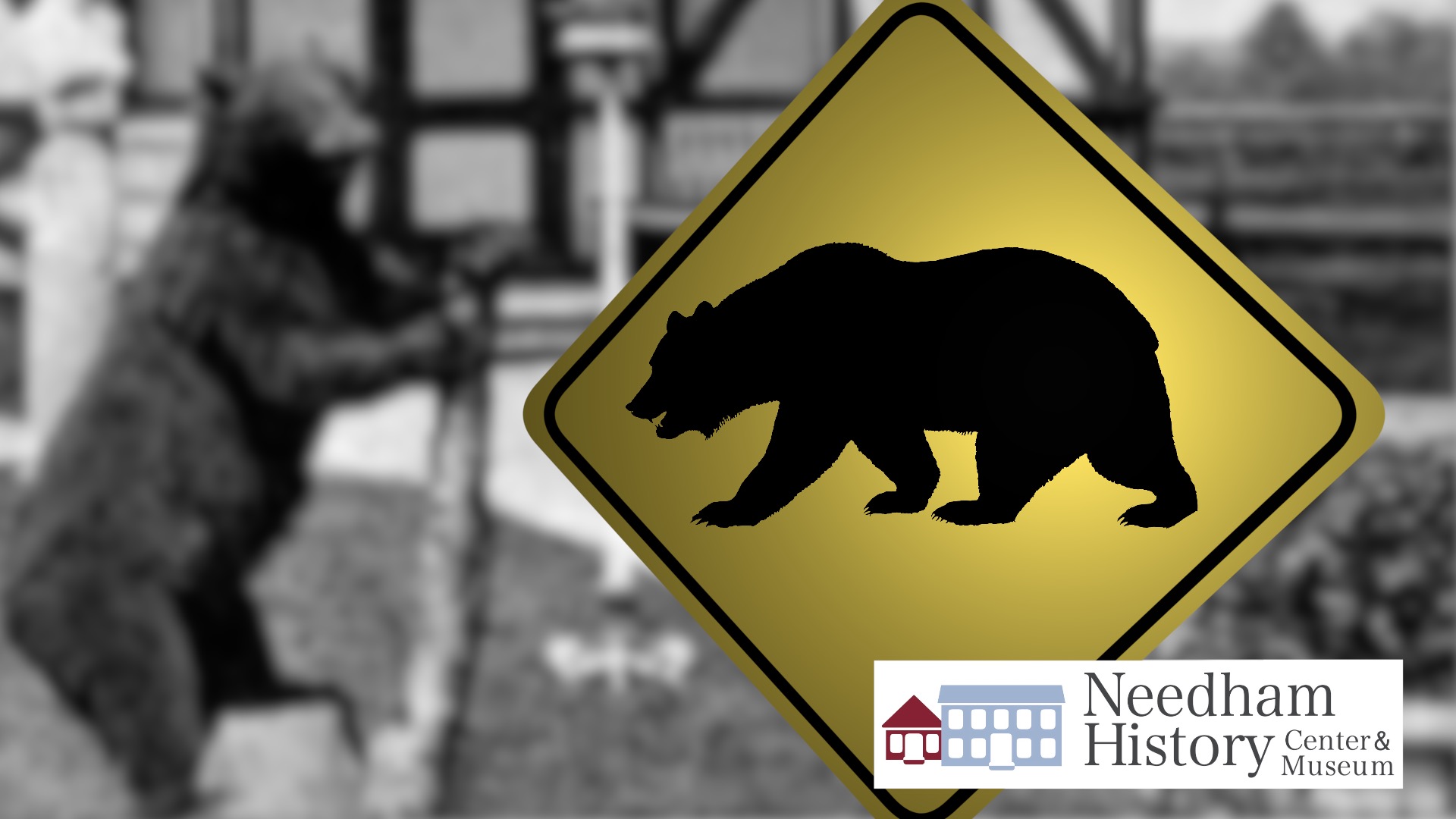
Needham History: Billy Bruin – and Other Bears on the Lam
Smarter than the average bear.
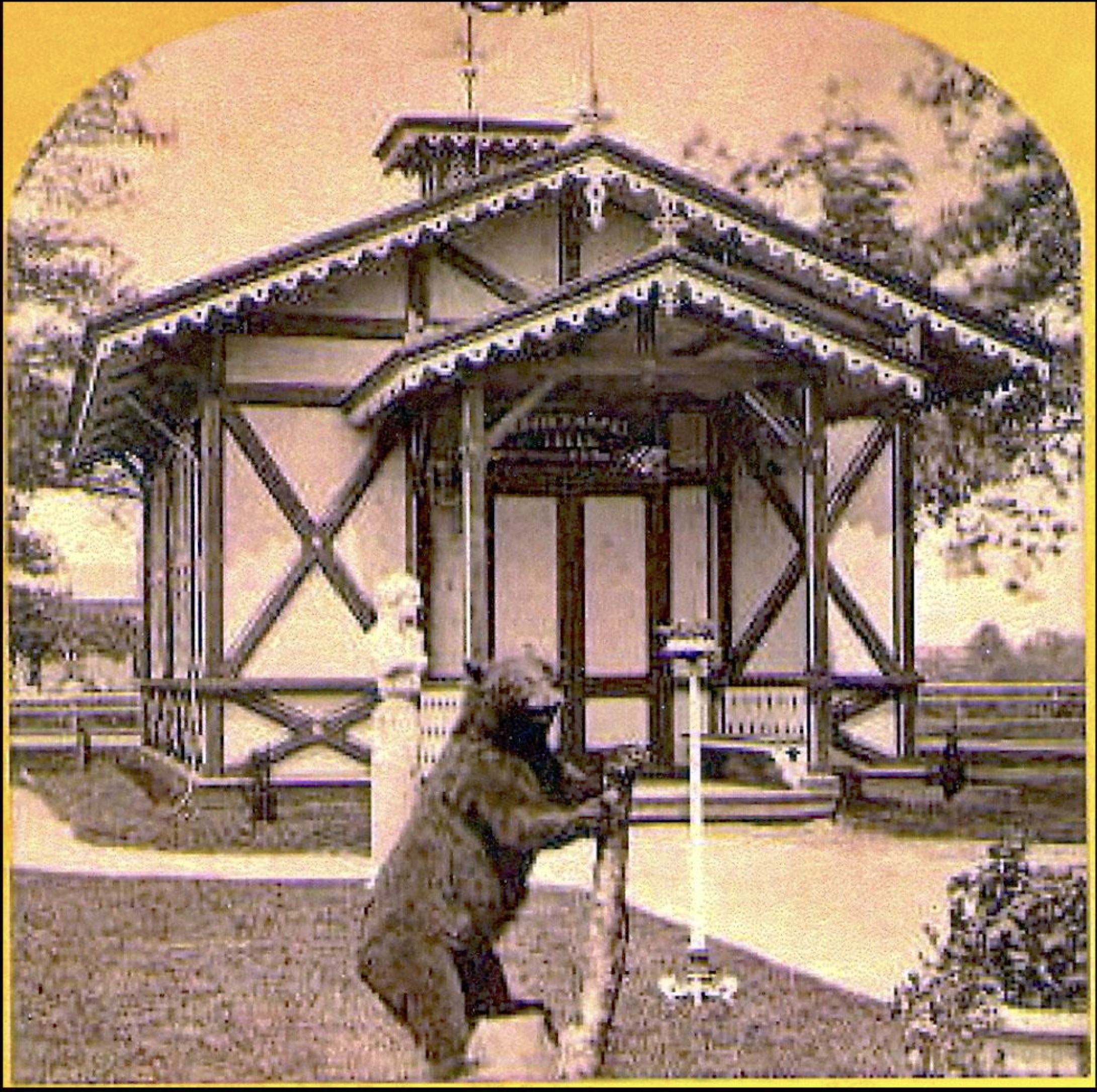 The stuffed skin of Billy Bruin, standing outside of the Union Chapel on Baker’s estate. This bear looks much smaller than the eight feet tall that Baker described. However, a painting of the funeral procession in the collections of the MA Historical Society shows Billy to be about this size and standing in this position. Baker was comfortable with exaggeration.
The stuffed skin of Billy Bruin, standing outside of the Union Chapel on Baker’s estate. This bear looks much smaller than the eight feet tall that Baker described. However, a painting of the funeral procession in the collections of the MA Historical Society shows Billy to be about this size and standing in this position. Baker was comfortable with exaggeration.
Billy Bruin – and Other Bears on the Lam
The big news in Needham this week was the wandering bears. The Massachusetts Environmental Police have been keeping track of two juvenile black bears that have been wandering around the nearby towns. On Thursday, I woke up to a text from a neighbor, warning us that the bear was in her yard that morning. Later in the day, there were sightings on Harris Avenue, Great Plain Avenue, and other locations. The police assume that the young bears are looking for a place to call home among the various small woodlands in our area, and will soon settle down. Nevertheless…
This reminds me of an incident in Needham’s history (of course it does!) – the time Billy Bruin took to our streets (yes, it’s a rerun – but a timely one).
Boston businessman William Emerson Baker (1828-1888) owned a sewing machine company, Grover & Baker, which sold the expensive machines all over the US and Europe. Having made a fortune, he retired in 1868 at the age of forty, and bought himself 800 acres in the southwest corner of Needham for a summer estate, which he called Ridge Hill Farms. The estate was for his relaxation and amusement, and over the next ten years it became filled with attractions, follies, exhibits, gardens, and all manner of displays. It started out as a private retreat, but rapidly became a public spectacle. Now widely regarded as America’s first amusement park, Ridge Hill Farms embodied Baker’s extraordinary passion for social and economic reform, experimental agriculture, bad puns and practical jokes.
Baker was both smart and clever, and he did a lot of important things. His ideas about public health and nutrition were decades ahead of their time. He invested much wealth in the public benefit – the first Boston aquarium, the first Boston natural history museum (later the Museum of Science), the origins of MIT. He was a successful businessman, and also had a formidable understanding of technology, mechanics, and animal husbandry.
That said, there is also no question that he was rather, well, eccentric. As one contemporary noted, Baker was “a gentleman who had accumulated a large fortune by the exercise of the qualities which compel success in every day affairs; and yet part of his life was lived amid surroundings as grotesque and in occupations as little reasonable as those which obtain in the world on the other side of the looking glass… [His estate] was a gentleman’s country place, a dime museum, a junk shop and a perpetual April Fool’s-day combined.” In other words, he made his money as a shrewd businessman, and now he intended to spend it in all of the varied and quirky ways that interested him.
Among the many attractions on Baker’s estate were his animals. Some were as commonplace as raccoons; others more exotic, like his tropical birds, alligator, and ibex. Among these were his bears, housed in the Circular Bear Pit and the Octagonal Bear
Pit. By 1874, Baker already had four black bears, older and fairly docile. He was expecting to take delivery of two more youngsters, but one of them died in transit. Then he was offered Billy.
Billy’s funeral procession. The children are dressed in long white robes and wearing masks of blank human faces, or of animals. The cart bears several stuffed birds – a raven, a dove, and Leander the Swan – as well as a small girl dressed as an angel. The cart is pulled by robed and masked children, and led by Father Time – ‘the Great Destroyer’ – with his hourglass and scythe.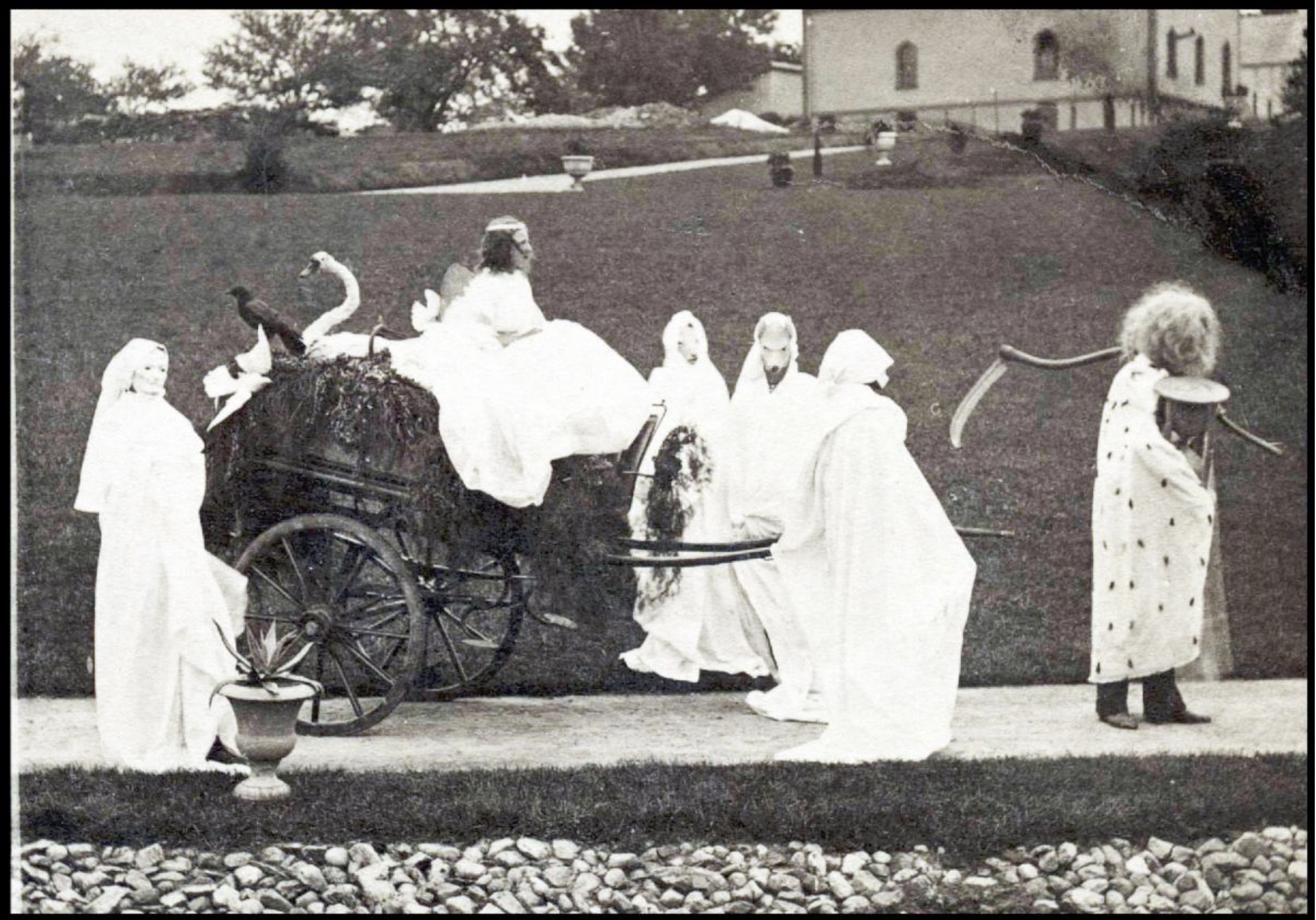
In July 1874 Baker took delivery of a 2-year-old black bear, which he named Billy
Bruin. Billy came with a reputation for being difficult to manage. He was said to weigh more than 500 pounds and stand some 8 feet tall. Baker owned Billy for approximately three hours – that’s how long it took the bear to escape from the train depot and leg it for freedom (Billy was – well – smarter than the average bear). Billy spent his first night of freedom in Dedham under the porch of the Congregational Church, and then wandered back to Needham where he spent some time in the High Rock woods and other locations around town, and terrorizing John Wing’s piggery on South Street. He was then spotted in Quincy several days later, and got as far as Weymouth before he was shot and killed while trying to swim the river. His body washed up in Hull, and was returned to Baker, who had the skin stuffed and put on display. The rest of Billy was buried in a solid-copper coffin and buried overlooking Sabrina Lake.
Billy’s funeral was an excuse for Baker to hold one of his many extravagant parties. More than 1000 guests were invited to Needham to participate in Billy’s funeral. Regrets had to be expressed in the form of poetry, and a small volume of these responses was printed as a gift to attendees. The honored guests came from among the political, military, and business elite. The poetry is, uniformly, Bad.
A.M.H. of Boston wrote:
Mrs. Milton Whitney of Baltimore really got into the spirit –
Featured at the funeral in processions and tableaux were children, dressed in long white robes and wearing masks of blank human faces, or of animals. Scenes were staged, such as “The Pretty Berry Girl,” “The Wise Heads who knew just how to catch the Bear” (children costumed as monkeys and clowns), and “The Envoy from the Imperial Russian Bear.” The cart leading the funeral procession carried several stuffed birds – a raven, a dove, and Leander the (late) Swan – as well as a small girl dressed as an angel. The cart is pulled by robed and masked children, and led by Father Time – ‘the Great Destroyer’ – with his hourglass and scythe. Billy himself was carried on a bier, standing alongside a stump as mounted by the taxidermist.
Like our young cubs, Billy was just trying to find himself a suitable place to live. Even in 1874, finding a niche among the rapidly-growing human settlement was difficult. The events following our own bear sightings have certainly been exciting – A bear! On our street! – if not also a bit unnerving. Here’s wishing them success and room to roam, in a safe and uninhabited (and preferably rural!) woodland.
The Octagonal Bear Pit. The rear end of one of the small bears is visible at the gate.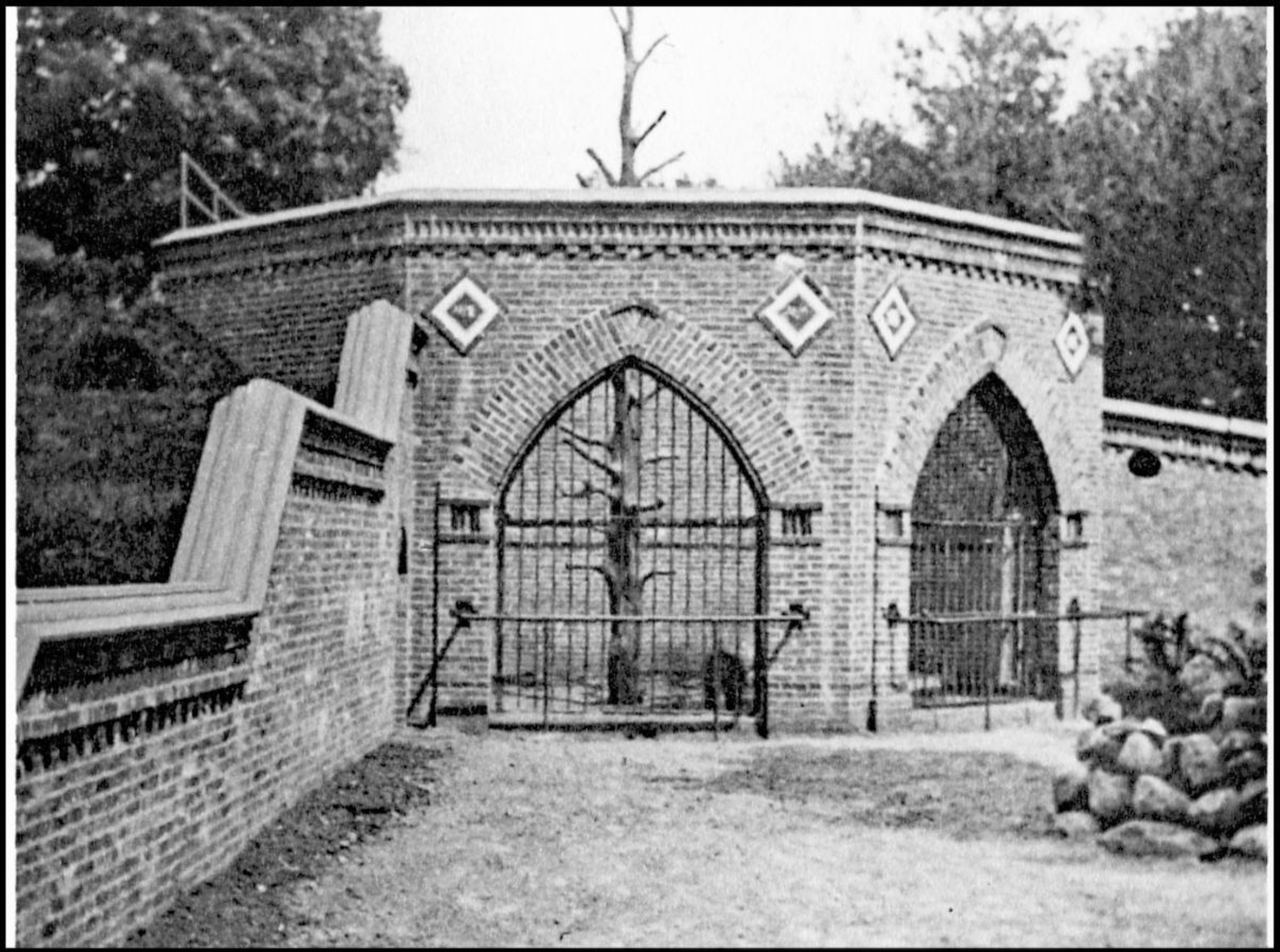
 |
Gloria Polizzotti Greis is the Executive Director of the Needham History Center & Museum. For more information, please see their website at www.needhamhistory.org. |
